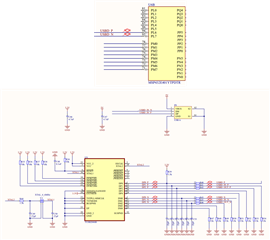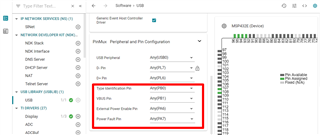Other Parts Discussed in Thread: TUSB2046B, TPS2051B
Tool/software:
Hi TI,
We have a design based on MSP432E401 that has a USB port via a TUSB2046B hub. Attached is the schematic.
The MSP432E401 works, however I am trying to run the example usbhostmouse_MSP_EXP432E401Y and the mouse is never detected.
Please any idea why the mouse is not detected? Do I need to do anything additional for the hub?
Thanks very much.



